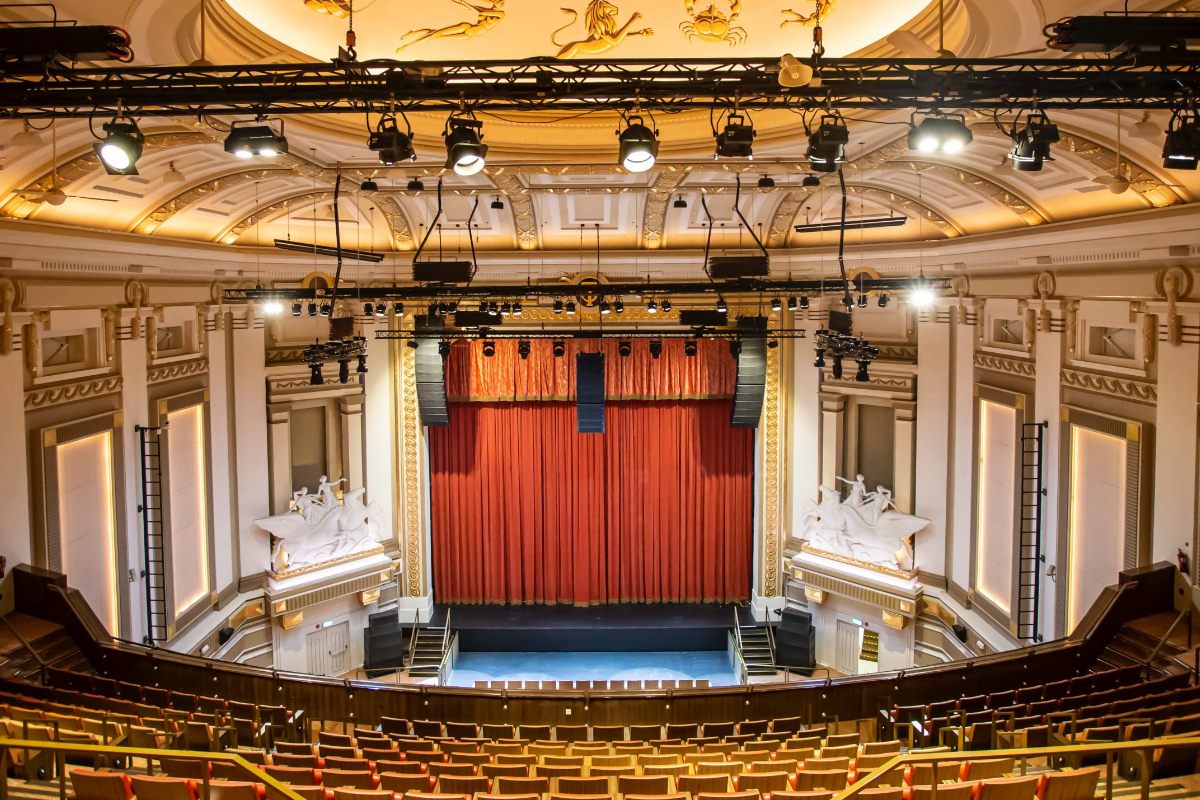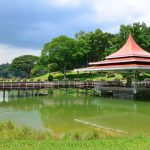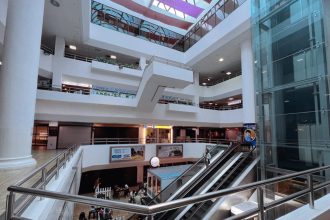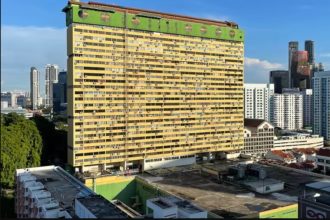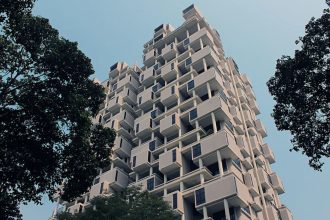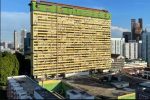Key takeaway
On Saturday nights in postwar Singapore, Capitol Theatre was a centre of weekend film culture, a place where people came not just for the latest movie, but for a shared social ritual. As the Shaw Organisation’s flagship cinema, it offered a glamorous escape, mixing world‑class films with live acts, and built community around story, spectacle, and an iconic heritage venue.
On a typical Saturday evening in postwar Singapore, heading to Capitol Theatre felt like stepping into a world of elegance, excitement and shared experience. This was not just any cinema, for many, it was a landmark of entertainment, status and social gathering.
The golden age of weekend filmgoing
After World War II, Capitol Theatre regained its role in Singapore’s cultural life. In 1946, the Shaw Organisation bought it, transforming it into their flagship cinema. On Saturday nights, its vast auditorium, once seating nearly 1,700 people, would fill with couples, families and film-goers dressed for an evening out.
A hub for films and live performances
Capitol Theatre was not only about movies. It hosted live acts, dance revues, variety shows, even beauty contests. These performances made Saturday nights richer: you could arrive early, watch a live show, then settle in for a film. The blend of stage and screen made the theatre feel like the beating heart of Singapore’s entertainment scene.
Film and performance culture in Singapore extended beyond Capitol. Other notable cinemas like Aalto-inspired cinema design also contributed to weekend rituals, showing how architecture and programming shaped leisure across the city.
Architecture and atmosphere shaping weekend rituals
The building itself played a part in making Saturday night outings special. Designed by Keys & Dowdeswell in a graceful neoclassical and Art Deco style, the theatre’s interior was striking. The dome ceiling featured a mosaic of the twelve zodiac signs, and Pegasus statues flanked the stage, details that were carefully restored during renovation.
In the pre-war era, the theatre even had a retractable roof that could open on cool nights. Imagine sitting under a starry sky, watching a film or a live act, and then talking late into the night in the plush foyer. That was part of its charm. By the 1950s and 60s, Saturday patronage was a ritual, a time to indulge. Theatres like colonial architecture and student life also reflected Singaporeans’ appreciation for social and communal spaces.
Social and cultural significance of Saturday film culture
Why Saturday? It was the end of the working week, a chance to wind down and to come together. For many Singaporeans, it was a mark of status. The theatre was considered high-end, classy. Going to the Capitol signalled that you cared about more than just passing time; you appreciated style, spectacle, and performance.
It also played a cultural role. Wearing your best clothes, meeting friends, possibly seeing live acts: all of these made Saturday nights more than just passive movie-watching. It was a communal rite. For local performers, the stage offered a platform. For Singaporeans navigating postwar identity, Capitol’s program represented glamour, modernity, and social cohesion. Nearby entertainment venues, like floating restaurants and entertainment, complemented these weekend rituals.
A place for memory and storytelling
Many of those who visited in the 1950s–1970s looked back on the theatre with nostalgia. Older patrons remembered being witnesses to stars like Charlie Chaplin and Douglas Fairbanks early on. Later, they spoke of Saturday nights when crowds filed in, the lights dimmed, and films began. Conversations, laughter, a shared sense of being part of something special.
Saturday Nights Beyond the Screen
Saturday evenings at the Capitol were more than films and live performances. People lingered in nearby cafes and eateries, sharing snacks and discussing the latest movie releases. Street vendors outside the theatre sold film-themed memorabilia and posters, adding excitement to the outing. Movie premieres often drew long lines, with patrons dressed in their finest outfits. The surrounding streets buzzed with activity, from young couples heading to the theatre to families enjoying the weekend air. These rituals created a vibrant social scene that complemented the cinematic experience inside the Capitol Theatre.
Transformation and legacy
The Saturday film tradition did not last without change. The theatre’s last movie before closing was in December 1998. After years of closure and uncertainty, it was restored and reopened on 22 May 2015, exactly 85 years after its first screening.
The refurbished theatre has 977 seats, down from its earlier capacity, and features a state-of-the-art rotational floor system. This system allows the auditorium to be converted for different uses, film screening, live performance, and events. While Saturday nights are no longer exactly what they were, the spirit lives on.
Preserving heritage in shared experience
The restoration was done with heritage sensitivity. Conservation specialists reinstated gilded plasterwork, Pegasus figures, and zodiac mosaics. The original Art Deco façade and corner signage were revived. Architects61 and Richard Meier & Partners Architects oversaw this careful work.
Visitors today can still appreciate the theatre’s charm and enjoy its historic atmosphere. The traditions of gathering, of watching together, remain part of its legacy.
Why Saturdays at the Capitol still resonate
Several aspects of the Capitol Theatre contributed to its lasting impact on weekend culture. These points highlight why Saturday nights at the theatre were more than just about watching films.
- Were a social ritual: Going there was more than seeing a movie; people dressed up, socialised, and made it a night out.
- Mixed entertainment: The theatre offered films and live performances, mixing glamour and community.
- Built cultural identity: As a premier venue, it supported local talent and hosted international works, shaping modern Singapore’s entertainment.
- Architectural charm: Its dome, mosaics, Pegasus reliefs, and even its retractable ceiling made the space memorable and atmospheric.
- Legacy of shared experience: Even after reopening, it continues to bring people together, preserving its role as a cultural gathering place.
Quick insights into its history
For a snapshot of the theatre’s timeline and architecture, these quick facts summarize its historical significance and transformations.
- First opened on 22 May 1930, with the screening of *Rio Rita*.
- Designed by Keys & Dowdeswell; construction by Brossard and Mopin.
- Purchased by Shaw Organisation in 1946 and renamed the Shaw Building.
- Closed in 1998, reopened in 2015 after conservation and redevelopment.
- Now seats 977 and features a flexible floor system for events.
Heritage and geography at a glance
| Building | Key facts | Nearest MRT | Sources |
|---|---|---|---|
| Capitol Theatre | Built ca. 1930, Art‑Deco/Neoclassical, 4 storeys, restored and reopened 2015, 977 seats | City Hall MRT (Downtown Line / North‑South Line) | Source |
Saturday Nights Remembered
The legacy of the Capitol Theatre continues to inspire Singaporeans to value shared cultural experiences. Saturday nights at the theatre remind visitors how architecture, entertainment, and social interaction combined to create lasting memories. Those evenings of films, live acts, and conversation shaped postwar social life, leaving a vivid imprint on the city’s collective memory. Patrons recall not just the movies, but the feeling of gathering with friends and family, the excitement of a live performance, and the glamour of an evening out. The theatre’s design, from its soaring dome to Pegasus sculptures and zodiac mosaics, enhanced every visit, creating a sense of occasion and wonder. Today, visitors stepping into the restored theatre can sense that same vibrancy, connecting traditions to modern entertainment culture. For anyone interested in a detailed historical overview of Singaporean cinema culture, the cinema of Singapore provides context on how theatres like Capitol influenced community entertainment and leisure habits.
